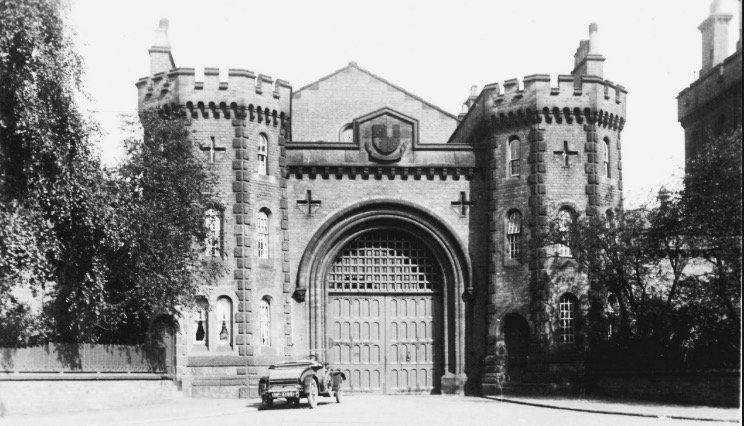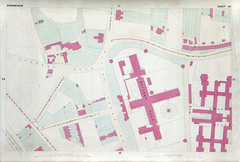
HM Prison Birmingham: Visiting Hours, Tickets, and Historical Significance Guide
Date: 14/06/2025
Introduction: Understanding HM Prison Birmingham
Nestled in Birmingham’s historic Winson Green district, HM Prison Birmingham stands as a symbol of the UK’s evolving penal system and Victorian architectural legacy. Established in 1849 to replace earlier inadequate facilities, this Category B men’s prison mirrors nearly two centuries of societal, legal, and cultural transformation. Designed by the eminent architect Daniel Rowlinson Hill, the prison became a touchstone for Victorian penal reform, particularly under its first governor, Captain Alexander Maconochie, who pioneered the influential “marks” rewards system (Institutional History; Wikipedia; BBC News).
As an operational correctional facility, public access to HM Prison Birmingham is tightly regulated, with visits restricted to approved individuals. This guide offers a comprehensive overview of the prison’s history, current role, visitor requirements, and suggestions for exploring Birmingham’s wider heritage.
Contents
- Historical Overview
- Foundations and Early Development
- The Maconochie Era and Reform
- Victorian Expansion
- Twentieth Century Challenges
- Privatization and Recent Reforms
- Visiting HM Prison Birmingham
- Who Can Visit?
- Visiting Hours & Booking
- Accessibility, Location, and Facilities
- Essential Visitor Tips
- Exploring Birmingham’s Penal Heritage
- Frequently Asked Questions (FAQ)
- Additional Resources
1. Historical Overview
Foundations and Early Development (1840s–1850s)
HM Prison Birmingham, originally known as Winson Green Prison, was constructed in 1849 following the designs of Daniel Rowlinson Hill, who also designed other notable UK prisons (Institutional History; Wikipedia). The radial design reflected Victorian ideals of discipline and rehabilitation, although overcrowding and poor conditions quickly challenged these aspirations (Prison Guide).
The Maconochie Era and Reform
As the prison’s first governor, Captain Alexander Maconochie introduced a revolutionary “marks” system to incentivize good behavior and promote rehabilitation—a major departure from purely punitive approaches (BBC News). Despite resistance and his eventual dismissal, Maconochie’s ideas influenced penal reform in the UK and internationally.
Victorian Expansion and Notoriety
By the late 19th century, the prison expanded to accommodate Birmingham’s growing population, housing both men and women. Between 1885 and 1965, it was the site of 35 executions, the last occurring in 1962 (The Prison Direct).
Twentieth Century Challenges
The 20th century was marked by persistent overcrowding, violence, and administrative scandals. Notable incidents included controversial inmate treatment and damning inspection reports (Wikipedia; The Prison Direct). The prison witnessed riots, protests, and notorious escapes, reflecting broader challenges in the UK penal system.
Privatization and Recent Reforms (2011–Present)
In 2011, management was outsourced to G4S, making it the first UK prison to be privatized (BBC News). However, escalating issues with violence and drugs culminated in a major riot in 2016, prompting the Ministry of Justice to regain control in 2018 (Prison Guide; BBC News). Recent years have seen significant improvements in safety, cleanliness, and rehabilitation programs (The Prison Direct).
2. Visiting HM Prison Birmingham
Who Can Visit?
HM Prison Birmingham is a fully operational Category B men’s prison. Public tours are not available due to security protocols and privacy considerations. Only approved friends, family members, and legal representatives may visit inmates.
Visiting Hours & Booking
- Visiting Hours: Typically scheduled throughout the week, with exact times varying by inmate location. Always confirm current hours via the official GOV.UK page.
- Booking: All visits must be arranged in advance using the official booking system. Required details include the inmate’s name, prison number, your relationship to the inmate, and photo ID (Prison Guide).
- Eligibility: Only approved visitors may attend; valid government-issued identification is mandatory.
Accessibility, Location, and Facilities
- Accessibility: Provisions exist for disabled visitors—notify the prison in advance for assistance.
- Location: HM Prison Birmingham, Winson Green, Birmingham, B18 4AS, UK.
- Transport: Well-served by local buses and nearby train stations. Limited parking is available; public transport is recommended.
- Visitor Facilities: Amenities include a waiting area, restrooms, refreshments, and a children’s area. These facilities are managed by PACT and aimed at supporting families during visits.
Essential Visitor Tips
- Arrive early to allow time for security checks.
- Bring valid photo identification.
- Observe all dress codes and visitor conduct rules.
- Leave prohibited items (e.g., phones, cameras, sharp objects) at home.
- For accessibility needs, contact the prison in advance.
3. Exploring Birmingham’s Penal Heritage
Alternative Prison Museums & Experiences
As HM Prison Birmingham is not open for public tours, consider these UK prison museums for immersive experiences:
- Shrewsbury Prison: Guided tours, escape rooms, and overnight stays (Slow Travel UK).
- Bodmin Jail: Offers the “Dark Walk Experience” and ghost tours.
- Shepton Mallet Prison: Sightseeing and historical tours.
- Clink Prison Museum (London): Exhibitions on 600 years of prison history.
Nearby Historical Sites
Birmingham offers a wealth of historical attractions, including:
- Birmingham Museum and Art Gallery
- Jewellery Quarter
- Aston Hall (Park Regis Birmingham)
- Thinktank Birmingham Science Museum
Local walking tours, including those by the Black Heritage Walks Network, provide context on the city’s social and industrial history.
4. Frequently Asked Questions (FAQ)
Q: Can the public tour HM Prison Birmingham?
A: No, only approved visitors may enter for inmate visits.
Q: How do I book a visit?
A: Book through the official prison system or by calling their booking line. Full details and the booking portal are on Prison Guide.
Q: What identification do I need?
A: Government-issued photo ID is required.
Q: Are there any ticket fees?
A: No, but all visits require prior approval and pre-booking.
Q: Is the prison accessible for disabled visitors?
A: Yes—contact the prison in advance to arrange accommodations.
Q: Are guided tours or special events offered?
A: No, the prison does not conduct public tours or events.
Q: What items are prohibited?
A: Mobile phones, cameras, drugs, sharp objects, and other contraband are not permitted during visits.
Q: Where can I learn more?
A: Consult HM Inspectorate of Prisons and Prison Guide.
5. Additional Resources
- Institutional History
- Wikipedia
- Prison Guide
- The Prison Direct
- BBC News
- GOV.UK – Prison Visits
- Prison Guide – Booking
- GOV.UK – Birmingham Prison
Conclusion
HM Prison Birmingham encapsulates a fascinating narrative of penal reform, social change, and community impact. While restricted to approved visitors, understanding its protocols and historical context enriches appreciation for the site and its role within Birmingham’s heritage. Pair your visit with exploration of the city’s museums and historical neighborhoods for a comprehensive experience. Stay informed via official channels and consider downloading the Audiala app for audio tours and up-to-date visitor information.





































































































